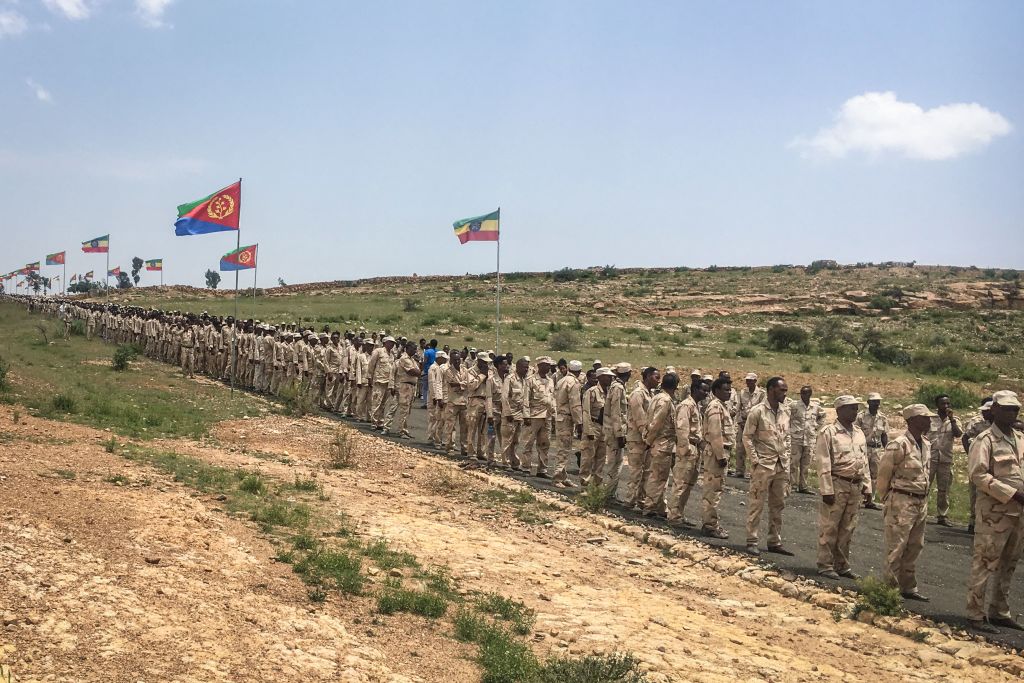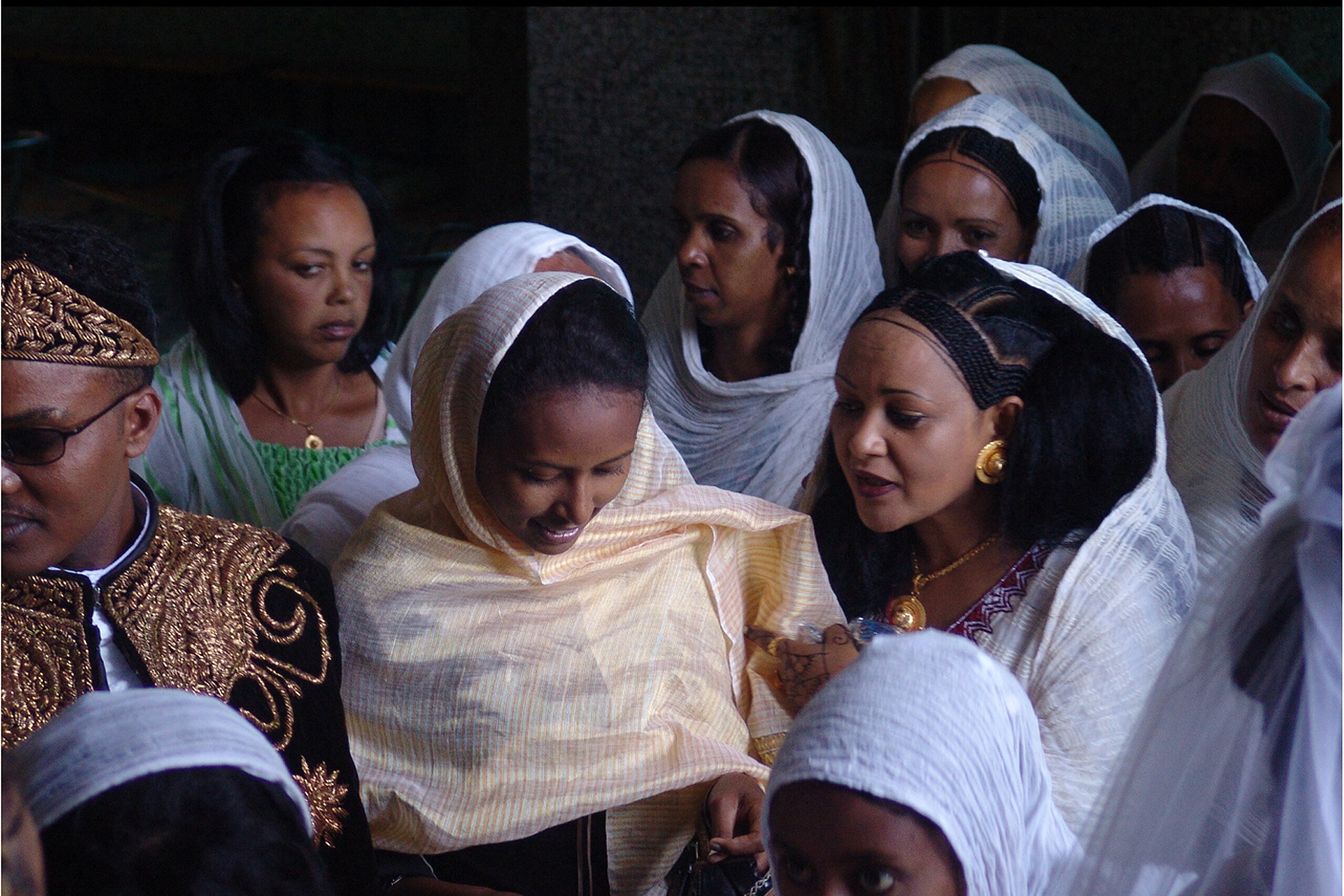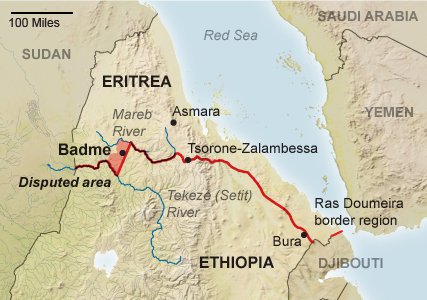The civil war in Ethiopia, between the Ethiopian federal government and Tigray People’s Liberation Front (TPLF), which broke out in November 2020 has gone through both intense fighting as well as ceasefires. The last and the longest ceasefire, which lasted for five months, was broken this August and fighting resumed. [1] Both parties to the conflict state different reasons for the truce breaking.
Henok Teferra Shawl, Ethiopian Ambassador to France, claims that the truce was broken by TPLF’s invasion of neighboring Amhara region. [2] According to the TPLF, it was broken by the Ethiopian federal army’s air strike in Tigray. Three weeks after these incidents, the Eritrean troops invaded Tigray [3] and launched full-scale offensive along the Eritrea-Tigray borders. According to Getachew K. Reda [4], TPLF’s spokesperson, “Eritrea deployed its entire army as well as reservists.” The Amhara armed forces previously trained by the Eritreans were deployed to Tigray as well. A humanitarian worker in the northern Ethiopian region told the Associated Press, that “the Eritrean forces are shelling the surrounding areas.” This is happening when the Government of Ethiopia has agreed to peace talks with TPLF mediated by the African Union. [5] The role of Eritrea in these negotiations is in question.
Eritrean Previous Engagement
This is not the first Eritrean engagement in the conflict. In fact, Eritrean troops played a crucial role in containing the insurgency during the TPLF’s early advancements into Amhara and Afar regions. [6] When the TPLF was moving towards Addis Ababa last November, Eritrean army cut off TPLF’s logistic supply lines, leading to the TPLF’s retreat to the north. However, the Eritrean presence was publicly admitted only in April 2021 [7], six months after the conflict broke out. Ethiopian Prime Minister Abiy Ahmed immediately assured the international community that the Eritrean troops will leave the country. [8]

Locals, as well as the international community, affirm that many atrocities were committed by Eritrean troops against Tigrayan civilians, including those classified as war crimes. Several massacres were reported in Tigray, including a massacre in the town of Axum in which many of the victims were children; some as young as 13 years old. [9] Tigrayan women and men were subjected to rape and sexual violence, while others were taken by the soldiers to Eritrean camps. [3] In addition, the Eritrean engagement leaves thousands of internally displaced people (IDP) in the region who are in serious humanitarian need and food insecure. The Commission of Inquiry on Ethiopia, established under the United Nations (UN) mandate, indicated this September that starvation of civilians was used as a tool of war, just like sexual slavery which was committed by both, Eritrean and Ethiopian troops. [10]
Afwerki’s Lust for Power
However, the situation cannot be judged that easily. According to the Commission of Inquiry on Ethiopia [11], the Tigrayan troops also committed several war crimes and human rights abuses, mostly against Amhara civilians who became victims of large-scale killings, rape, and sexual violence. The TPLF argues that the Amhara civilians were targeted as a reprisal for rape of Tigrayan women and girls. Unfortunately, such actions only contribute to the vicious cycle of the conflict.
According to the Eritrean President Isaias Afwerki, so does the growing Tigrayan nationalism. In fact, more than 55 per cent of the Eritrean population are ethnic Tigrinya and another 30 per cent are ethnic Tigre, both very closely related to the Tigrayans in Ethiopian northern region. [12] Therefore, the growing nationalism on the other side of the border manifests mainly by political parties other than the TPLF, mostly the Tigray Independence Party, Salsay Weyane Tigray, and National Congress of Greater Tigray. [6] This raises serious concerns among the Eritrean leadership. Indeed, these parties are criticizing the TPLF for their inefficient policies and strategies and demand not only enhanced autonomy, but independence of Tigray altogether, which might endorse the Tigrinya and Tigre and potentially create an irredentist movement in Eritrea itself.
Despite the fact that the TPLF is not the main threat for the Afwerki’s position, it is a well-known brand posed as the “threat number one” to Eritrean unity and often used to justify Eritrean mandatory military service and authoritarian rule. Nevertheless, it seems from the recent developments that the Eritrean intervention is only contributing to the growth of Tigrayan nationalism. The massive mobilization in Eritrea still continues, including reservists up to 55 years old. [13]

Eritrea-Ethiopia Relations in Context
An Eritrean military intervention on the Ethiopian soil, with the Ethiopian consent, would be unthinkable. The two countries were at war over contested territory between 1998 and 2000. The contested territory, Badme Triangle [14], is currently being administered by Eritrea following June 5, 2018, proclamation by Prime Minister Ahmed that it will fully accept the terms of the Algiers Agreement as well as the outcome of the 2002 UN-backed Eritrea-Ethiopia Boundary Commission (EEBC) ruling which awarded disputed territories to Eritrea including Badme. During the war, it was the TPLF that held the power in Ethiopia and claimed a part of Eritrean territory inhabited by Tigrinya. A number of boundary commissions were established between 2002 and 2006. None of them was able to achieve a satisfactory and acceptable boundary decision. A binding agreement was reached in 2007 during private meetings in the Hague, Netherlands.

In the context of contemporary bilateral relations, it is important to mention that the war was not fought over land only. Both Eritrean and Ethiopian ruling parties were supporting the opposition oppressed by their enemy. Afwerki supported the Oromo Liberation Front. Two decades after the war broke out, in April 2018, Abiy, an ethnic Oromo and Amhara, became the Ethiopian Prime Minister and almost instantly signed a peace treaty with Afwerki. For this achievement, Abiy received the Nobel Peace Prize in 2019 and in 2020 the chapter of Ethiopian-Eritrean cooperation started. [15]
How long this cooperation between Ethiopia and Eritrea will last strongly depends on the outcome of the war in Tigray. Especially nowadays, when it seems that it is mainly Eritrean troops who are fighting in Tigray. Meanwhile, the Ethiopian federal army is preoccupied with al Shabab attacks in east Ethiopia and the Government of Ethiopia is open to peace talks with TPLF. [5] In the end, Ethiopia might witness Afwerki’s renewed ambition to adjust the Eritrea-Ethiopia border in Badme Triangle, besides his proclaimed goal to suppress the Tigrayan nationalism supposedly threatening Eritrean unity. Therefore, Abiy Ahmed needs to make sure, where his border agreement with Afwerki stands and most importantly, needs to carefully think through the implications of each proposal of the post-conflict settlement for the bilateral relations with Eritrea.
Sources
[1] France24. (2022, August 25). Fighting erupts in Ethiopia’s Tigray region, breaking five-month truce. France24. Retrieved from: https://www.france24.com/en/africa/20220825-fighting-erupts-in-ethiopia-s-tigray-region-breaking-five-month-truce
[2] Caslin, O. (2022, September 16). Ethiopia is a victim of ‘media slaughter’: Henok Teferra Shawl, Ambassador to France. The Africa Report. Retrieved from: https://www.theafricareport.com/240684/ethiopia-is-a-victim-of-media-slaughter-henok-teferra-shawl-ambassador-to-france/?utm_source=newsletter_tar_daily&utm_campaign=newsletter_tar_daily_19_09_2022&utm_medium=email&utm_content=top_stories_article_1
[3] The Africa Report. (2022, September 22). Eritrea plunges back into Ethiopia’s Tigray war. The Africa Report. Retrieved from: https://www.theafricareport.com/243358/eritrea-plunges-back-into-ethiopias-tigray-war/?utm_source=newsletter_tar_daily&utm_campaign=newsletter_tar_daily_23_09_2022&utm_medium=email&utm_content=edito_full_story
[4] Reda, G. K. (2022, September 20, 11:28). Eritrean forces have launched full scale offensive in all fronts today-all the way from Tekeze through to Irob. Heavy fighting in May Kuhli, Zban Gedena, AdiAwala, Rama, Tserona and Zalambessa. AbiyAhmed’s Eastern command, significant elements of Northwestern command and three [Twitter status update]. Twitter. Retrieved from: https://twitter.com/reda_getachew/status/1572155625722765313.
[5] Harter, F. (2022, October 5). Ethiopia: Abiy agrees to peace talks; Eritrea’s hardline position on TPLF could be stumbling block. The Africa Report. Retrieved from: https://www.theafricareport.com/246849/ethiopia-abiy-agrees-to-peace-talks-eritreas-hardline-position-on-tplf-could-be-stumbling-block/
[6] Gebreamlak, H. (2022, September 12). Eritrea’s role in resumption of Tigray’s war. The Africa Report. Retrieved from: https://www.theafricareport.com/239656/eritreas-role-in-resumption-of-tigrays-war/
[7] AlJazeera. (2021, April 17). Eritrea confirms its troops are fighting in Ethiopia’s Tigray. AlJazeera. Retrieved from: https://www.aljazeera.com/news/2021/4/17/eritrea-confirms-its-troops-are-fighting-ethiopias-tigray
[8] Walsh, D. (2021, April 15). Eritrean Troops Continue to Commit Atrocities in Tigray, U.N. Says. The New York Times. Retrieved from: https://www.nytimes.com/2021/04/15/world/africa/ethiopia-eritrea-tigray.html
[9] Human Rights Watch. (2021, March 5). Ethiopia: Eritrean Forces Massacre Tigray Civilians. Human Rights Watch. Retrieved from: https://www.hrw.org/news/2021/03/05/ethiopia-eritrean-forces-massacre-tigray-civilians.
[10] Keaton, J. (2022, September 22). UN experts detail extensive war crimes amid Tigray conflict. AP News. Retrieved from: https://apnews.com/article/health-united-nations-africa-ethiopia-eritrea-dcb992b8389069490c8b44357500cabe.
[11] UN. (2022, September 19). UN experts warn of potential for further atrocities amid resumption of conflict in Ethiopia [Press Release]. United Nations. Retrieved from: https://www.ohchr.org/en/press-releases/2022/09/un-experts-warn-potential-further-atrocities-amid-resumption-conflict.
[12] Theodora.com. (2022). Eritrea People – 2022. Theodora. Retrieved from: https://theodora.com/wfbcurrent/eritrea/eritrea_people.html
[13] BBC News. (2022, September 16). Eritrea’s mass mobilisation amid Ethiopia civil war. BBC News. Retrieved from: https://www.bbc.com/news/world-africa-62927781.
[14] Abbink, J. (2003). Badme and the Ethio-Eritrean Border: The Challenge of Demarcation of Post-war Period. Africa, vol. 58, no. 2, pp. 219-231. Retrieved from: https://www.jstor.org/stable/40761693
[15] Demissie, S. T. (2020, September 11). The Eritrea-Ethiopia peace deal is yet to show dividends. Institute for Security Studies. Retrieved from: https://issafrica.org/iss-today/the-eritrea-ethiopia-peace-deal-is-yet-to-show-dividends





